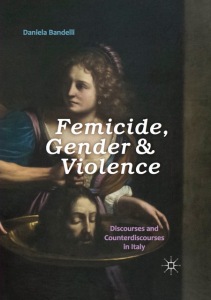UTERO IN AFFITTO. SE POTESSERO PARLARE I FETI.
Di Daniela Bandelli, La Croce, 15 dicembre 2018
Maternità surrogata, utero in affitto, gestazione per altri. I tre termini più in voga per descrivere l’emergente pratica di procreazione in cui un embrione matura in una donna che non ha né fornito l’ovulo né sarà la madre sociale del bambino in quanto appena nato lo cede per contratto alla coppia committente, di cui uno/a dei due è genitore biologico.
I tre termini hanno qualcosa in comune: richiamano tutti l’attenzione sul ruolo della (madre) surrogante nel processo con cui un essere umano viene al mondo. E si sa una volta che a un fenomeno viene assegnato un nome, i confini per comprenderlo sono più o meno tracciati. Vedi la battaglia semantica per trasformare gli omicidi di donna in “femminicidi”.
Immaginate per un momento che a dare il nome a questo modo di venire al mondo fosse il bambino, colui che nasce per volontà delle parti contraenti, coadiuvati da medici, avvocati e agenti di intermediazione. Immaginate di potergli dare la parola, un po’ come il Nel Guscio di Ian McEwan. Come la chiamerebbe la maternità surrogata l’esserino? Forse sviluppo fetale in una mamma a termine. O, chissà, il bambino politicamente corretto sostituirebbe mamma con prestatrice di servizi, lavoratrice nel campo della procreazione.
Nello studio che sto svolgendo (womoges.wordpress.com), non ascolto feti, bensì la società civile in Italia, Stati Uniti, Messico e India. Emerge una prima osservazione: lettura dopo lettura, intervista dopo intervista, mi accorgo che la surrogacy è perlopiù concepita come un affare di adulti, con i loro diritti da rivendicare, progetti di vita da realizzare e ideologie da imporre. Sia tra i favorevoli sia tra i contrari, la preoccupazione verso il cosiddetto “bambino surrogato” è marginale.
Vengono prima le donne, e i loro partner, che soffrono per non poter mettere su famiglia in modo naturale, e gli uomini desiderosi di diventare padri insieme a un altro uomo. Il bambino è marginale anche nei discorsi di quella parte di femminismo che vorrebbe la pratica abolita: la prima motivazione è la donna sfruttata, il suo corpo mercificato, e insieme ad esso, il figlio. Un discorso destinato allo scontro non appena si alzano gli scudi della sacra libertà individuale, e con poche probabilità di attecchire nella self-made (wo)man land. Un discorso tra l’altro che non potrà nulla in difesa dell’umanità in un prossimo futuro di uteri artificiali, quando per produrre bambini il corpo femminile sarà superfluo.
Più centralità il bambino la trova nelle argomentazioni dei pro-vita italiani, ma non posso dire lo stesso dei prolife americani (incluse le femministe prolife), che riservano tutte le energie all’infuocata battaglia sull’aborto e che sulla surrogacy tendono a non avere una posizione.
Dicevamo, se l’esserino potesse parlare. “Ehi mondo dei grandi! Ehi voi genitori, femmine e maschi, che mi volete a tutti i costi! Ehi voialtri che sul desiderio ostinato di un figlio avete messo su un business miliardario! Ehi voi che rivendicate il diritto delle donne a usare il proprio corpo! E anche voi che vi opponete perché pensate che tutte le surroganti siano vittime di povertà o incapaci di decidere. Vorrei essere io il protagonista nelle vostre battaglie pro o contro. Me lo lasciate fare? Questo nuovo trend per mettere al mondo migliaia di ‘surroghini’ potreste chiamarlo nascita da gestante per altri. O, se proprio volete vedermi come un inquilino, nascita da locatrice d’utero.”
Quanto diverso sarebbe il dibattito se spostassimo la prospettiva dalla maternità alla nascita, dallo sfruttamento e la libera scelta della donna al bene del bambino (attenzione, non al bambino come bene), l’unico che non ha possibilità di scelta. Potremmo riservare più attenzione alle conseguenze che i farmaci somministrati alle surroganti hanno sulla salute della generazione di domani, dell’impatto sullo sviluppo psico-fisico provocato dall’allontanamento dal corpo in cui il processo è iniziato, dei rischi che i feti corrono durante la gravidanza, dell’eventuale disorientamento per la privazione della figura che l’ha portato in grembo.
Fuori dalla retorica della scelta e dello sfruttamento, con letteratura medica alla mano, si potrebbe arrivare a decisioni più condivise. Non per forza di cose all’abolizione: si potrebbe anche stabilire che per soddisfare il desiderio di famiglia degli adulti la nostra società è disposta a far correre più rischi ai bambini. A quel punto, per coerenza, anche fumare e bere in gravidanza non dovrebbe destare più alcuna condanna sociale.
